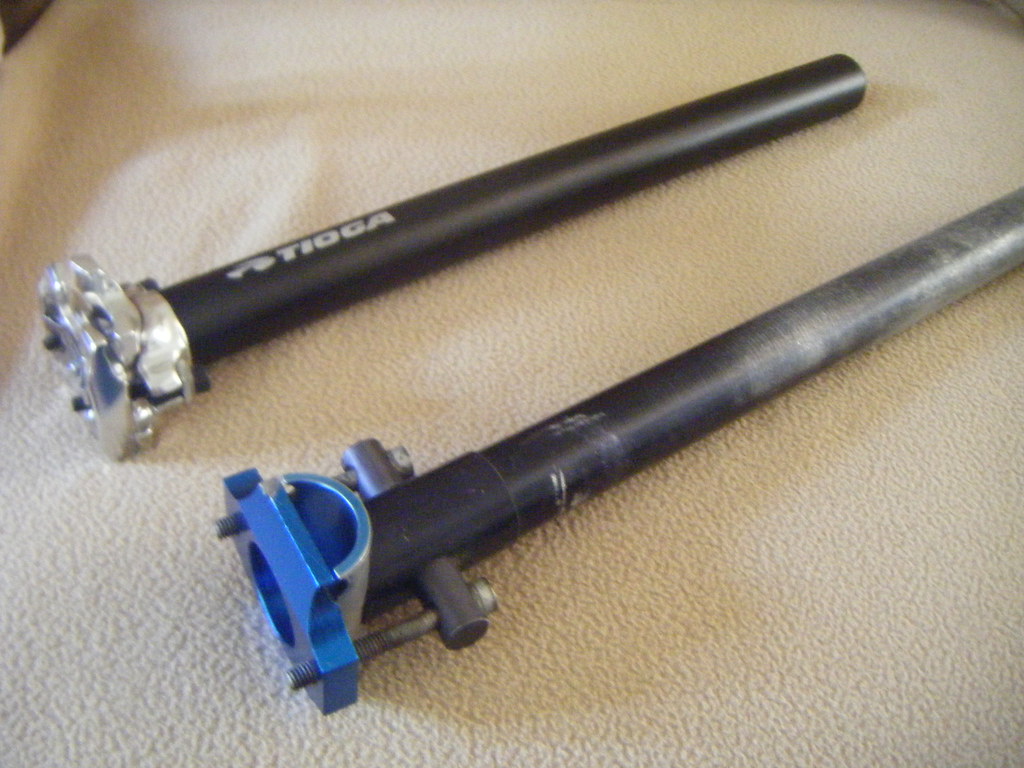With some excess time this weekend in the post festive season, I thought it is a good idea to start a documentation thread on the various Syncros seatposts that exist. By no means I'm a Syncros expert but I own quite a few of them, so I've lined them up to point out the key differences between the various generations of this seatpost. Any additions, discrepancies or mistakes, let me know!
Lined up, 11 versions of the Syncros seatpost in different materials, lengths, diameters and generations:
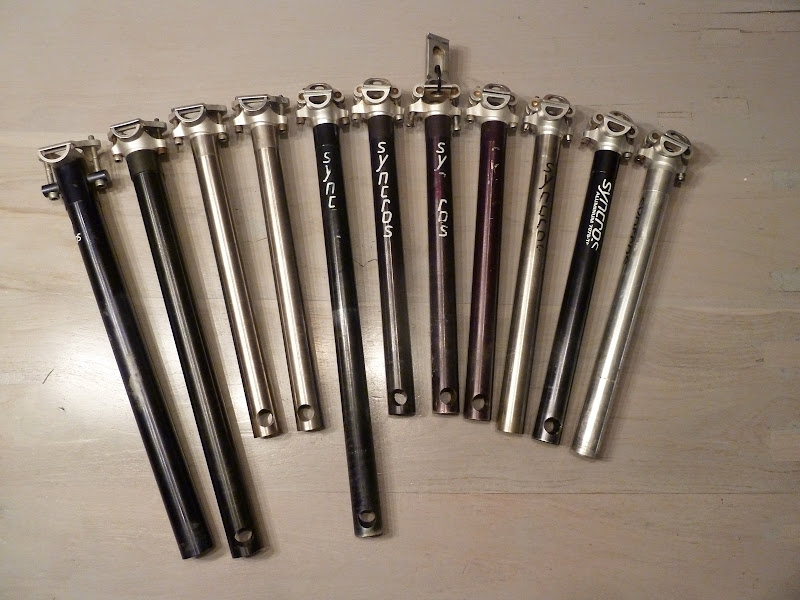
Important to know is that Syncros issued different generations of their seatpost, where generally, the first four generations are the ones we tend to put on our retro mountainbikes. All seatposts come with the same unique clamping mechanism that evolved over the different generations.
From left to right generation one till four:

First generation
The first generation was sold up until 1991 and had the Syncros logo as a sticker attached to the top rear part of the seatpost. The exact diameter is not stamped on the seatpost, but a single digit indicating the first number after the decimal was stamped on the top backside of the post.

Sticker logo at the top back of the post:
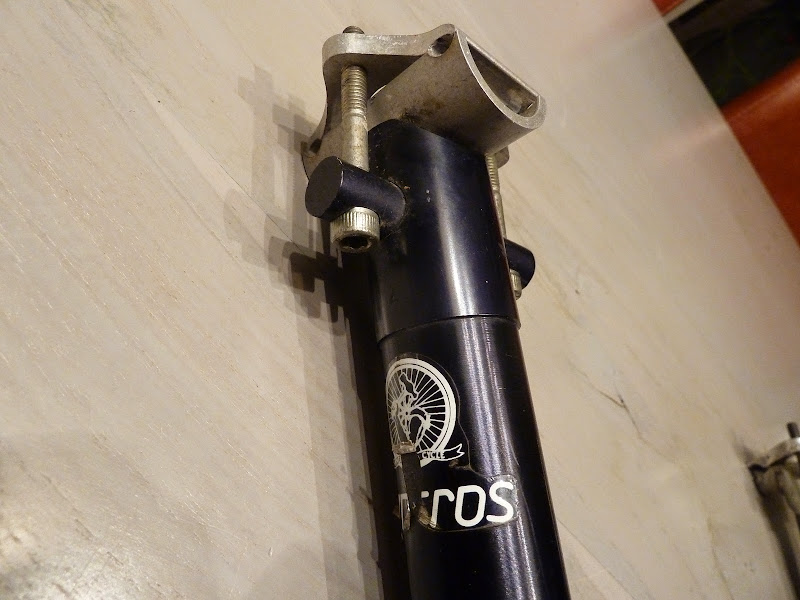
Second generation
In 1992, Syncros issued their second version with an some improvements. The overall clamping mechanism stayed the same but it was downsized: The allen bolts were reduced from 6mm to 5mm and the clamping mechanism, including the half circle shaped lower part of the clamp was reduced in size. A hole was added on the 2nd generation to make it possible to attach your expensive seatpost to a cable lock. The Syncros logo sticker was replaced by the wording Syncros, in anodized horizontal letters at the back of the seatpost. The diameter and length were stamped at the bottom end of the seatpost.
First Generation left, second generation right:
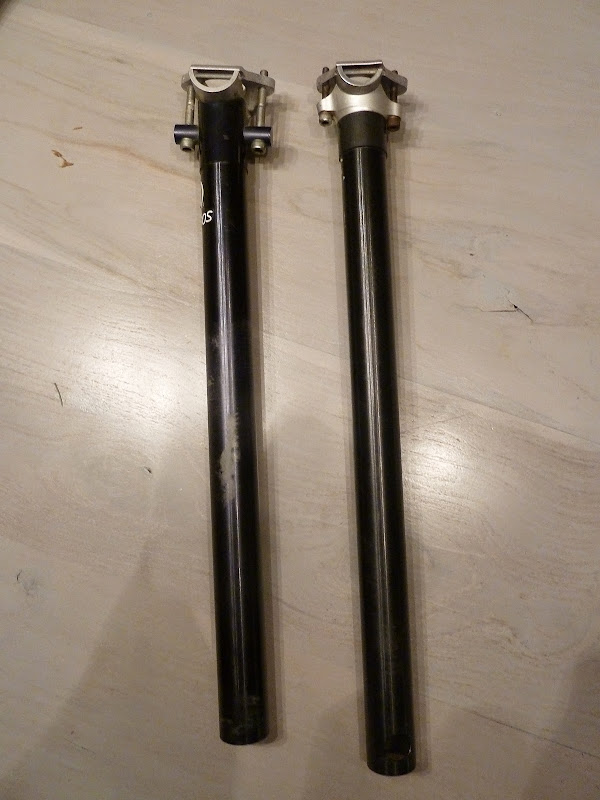

Smaller clamp mechanism on 2nd generation:

Hole added on the second generation:
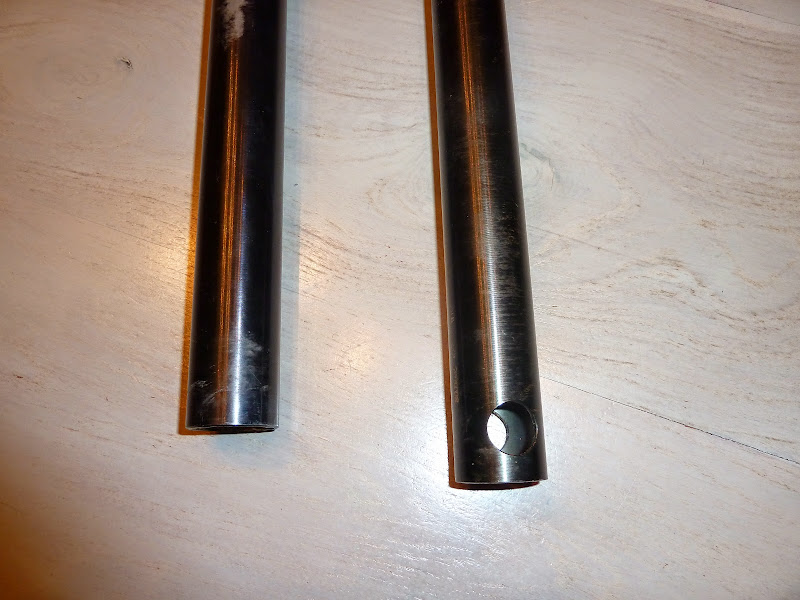
Syncros letters horizontal at the back of the seatpost:
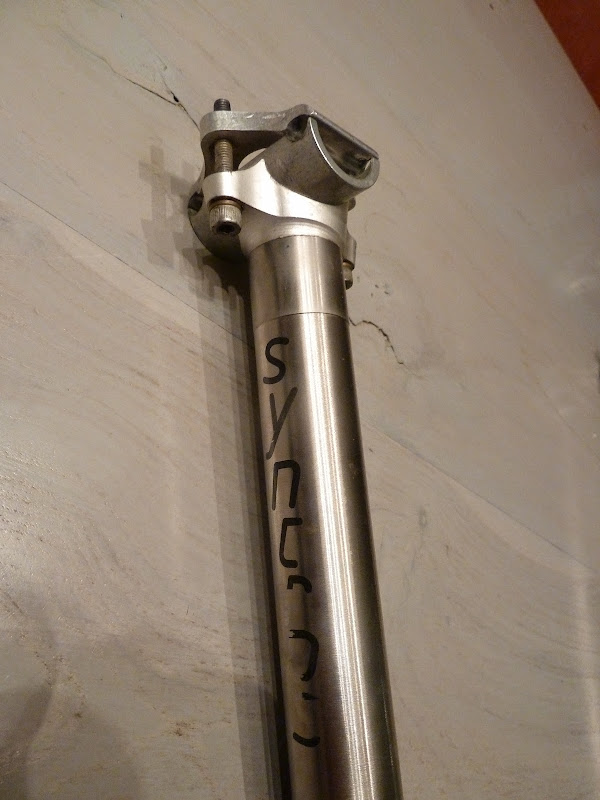
Third generation
In 1994, Syncros made a major change with a much improved clamping mechanism. Where the 2nd generation clamp was a bit too light and prone to cracks due to over tightening, the clamp construction on the 3rd generation was a lot more robust. The Syncros logo moved from the backside to both left and right, still with the letters anodized in horizontal direction. On the titanium version the hole disappeared again. The hole remained on the alloy version though. I have different versions of this seatpost and somewhere along production, Syncros started to stamp a four or five digit number on their seatposts. No clue if this is a serial number.
Second (left) and third (right) generations:

New clamp mechanism:
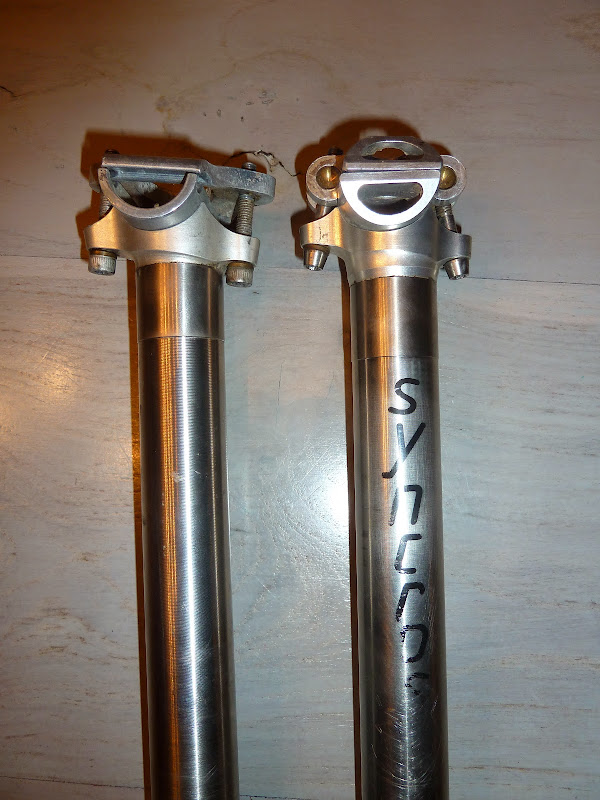
Fourth generation
Somewhere between 1997 and 1999, Syncros introduced the fourth generation of their seatpost. you can identify these by the change of the logo, where the new version now has the logo anodized in a vertical direction instead of horizontal. As an addition to the 7075T78 aluminium and 3AL2.5V Titanium versions, Syncros introduced a lower grade 6061T6 Aluminium seatpost in silver colour. This new seatpost has an ellipse shaped inner butting.
Same clamping mechanism

Ellipse shaped inner butting on 6061T6 version

Lined up, 11 versions of the Syncros seatpost in different materials, lengths, diameters and generations:
Important to know is that Syncros issued different generations of their seatpost, where generally, the first four generations are the ones we tend to put on our retro mountainbikes. All seatposts come with the same unique clamping mechanism that evolved over the different generations.
From left to right generation one till four:
First generation
The first generation was sold up until 1991 and had the Syncros logo as a sticker attached to the top rear part of the seatpost. The exact diameter is not stamped on the seatpost, but a single digit indicating the first number after the decimal was stamped on the top backside of the post.
Sticker logo at the top back of the post:
Second generation
In 1992, Syncros issued their second version with an some improvements. The overall clamping mechanism stayed the same but it was downsized: The allen bolts were reduced from 6mm to 5mm and the clamping mechanism, including the half circle shaped lower part of the clamp was reduced in size. A hole was added on the 2nd generation to make it possible to attach your expensive seatpost to a cable lock. The Syncros logo sticker was replaced by the wording Syncros, in anodized horizontal letters at the back of the seatpost. The diameter and length were stamped at the bottom end of the seatpost.
First Generation left, second generation right:
Smaller clamp mechanism on 2nd generation:
Hole added on the second generation:
Syncros letters horizontal at the back of the seatpost:
Third generation
In 1994, Syncros made a major change with a much improved clamping mechanism. Where the 2nd generation clamp was a bit too light and prone to cracks due to over tightening, the clamp construction on the 3rd generation was a lot more robust. The Syncros logo moved from the backside to both left and right, still with the letters anodized in horizontal direction. On the titanium version the hole disappeared again. The hole remained on the alloy version though. I have different versions of this seatpost and somewhere along production, Syncros started to stamp a four or five digit number on their seatposts. No clue if this is a serial number.
Second (left) and third (right) generations:
New clamp mechanism:
Fourth generation
Somewhere between 1997 and 1999, Syncros introduced the fourth generation of their seatpost. you can identify these by the change of the logo, where the new version now has the logo anodized in a vertical direction instead of horizontal. As an addition to the 7075T78 aluminium and 3AL2.5V Titanium versions, Syncros introduced a lower grade 6061T6 Aluminium seatpost in silver colour. This new seatpost has an ellipse shaped inner butting.
Same clamping mechanism
Ellipse shaped inner butting on 6061T6 version
